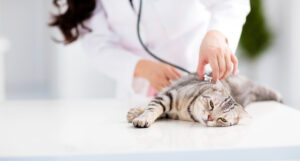Introduction
Our adorable feline friends are great at a lot of things, including making babies. A female cat has the potential to have around twelve kittens a year! Sadly, huge numbers of cats and kittens are killed in shelters and pounds, which is estimated to be over 50,000 each year. This makes desexing (also known as spaying for females or neutering/castration for males), an essential part of responsibility, when caring for your cat, whether they are male or female. Thankfully, this procedure is quite safe and fast for cats. Let’s dive into the hairy details including what occurs during the procedure, risks, costs and benefits of desexing kitties.
The Procedure
Desexing is performed as a day procedure in most cases for both cats and dogs . The procedure itself is typically quite quick, which means a short anaesthetic for the patient. For female cats, the procedure is performed under general anaesthetic. The procedure of castrating a male cat is fast, that it is performed many times under intravenous anaesthetic, also know as a “twilight anaesthetic”. Either way, on the day of desexing, the veterinarian will generally ask for the patient to be fasted in readiness for the procedure. The veterinarian may also have performed a blood screen to check for any anomalies that may indicate anaesthetic risk. This is often referred to as pre-anaesthetic blood testing.
Desexing Procedure for Male Cats
The castration procedure typically involves a very small incision on the scrotum over each teste. One by one, the testes are gently moved out of the scrotum and exposed through the small incision. They are carefully removed, and the vessels tied so that there is no bleeding. There are usually no stitches needed, and in many cases, you can barely tell your boy had anything done to him. The castration procedure can be more complicated when cats have retained testes cryptorchidism. Pain relief is typically administered prior to discharge, and generally no further medication is required.
Desexing Procedure for Female Cats
The typical procedure for desexing female cats involves the removal of both the uterus and ovaries. An incision is made through the skin and muscle generally around the point of the patient’s belly button (known as the midline) or the side (known as a flank spay). The veterinarian will generally try to make as small of a cut as possible, but sometimes a longer cut is needed, especially in older or overweight cats. The uterus is located, and each ovary is removed, with the veterinarian carefully ligating blood vessels. Once both ovaries are removed, the uterus is then also carefully removed. The veterinarian checks for signs of internal bleeding before closing the abdominal layers with stiches. Spaying is a much more invasive procedure than castration, but in young healthy cats, it is still quite quick. The feline patient often returning to normal soon after the procedure (and sometimes too soon, with rambunctious playing threatening to pop open stitches!). Pain relief may be administered prior to discharge, as well as some for at home, depending on the veterinarian’s pain protocol and medications used. An Elizabethan collar might be required for kittens or cats who can’t resist licking the surgical site.
Benefits of Desexing
Overall, the risk of contributing to the population of unwanted cats or kittens ending up in shelters or at the pound is a huge benefit to desexing our fertile felines. But there are other benefits too:
- Prevention of unwanted pregnancies
- Less likely to become lost while looking for a romantic partner
- Reduction in risk of contracting Feline Immunodeficiency Virus (FIV)
- Reduction in territorial spraying, which is very smelly in males who have not been desexed
- No unwanted in season behaviour in females
- Reduction in pyometra
- Reduction in mammary tumours and testicular tumours
- Possible increased lifespan
Risks of Desexing
Thankfully, there are limited risks in desexing cats but always discuss the benefits and risks of any procedure with your veterinarian to determine the best treatment option for your pet.
- Surgery related risks (anaesthetic risks, surgical complications, infections)
- Increased risk of obesity
- There may be an increased risk of diseases related to obesity in desexed cats which may include Feline Lower Urinary Tract Disease (FLUTD), diabetes mellitus, and capital physeal fractures (a break in the growth plate of the femur bone).
When is the best time to desex a cat?
Because cats can reach sexual maturity as early as four months old, having them desexed around 12 weeks old helps to prevent unwanted sexual behaviour and accidental pregnancies. In shelter environments, kittens are desexed once they weigh 1kg, highlighting the safety of this procedure. That said, discuss your pet’s particular situation with your veterinarian to formulate the best plan and timing of desexing for your cat or kitten.
Conclusion
Desexing our precious pet cats is an important part of their care. Not only does it prevent unwanted litters, but it also improves behaviour, and reduces the risk of developing certain diseases. When making the decision to desex your pet, be sure to discuss the decision with your veterinarian, who is your partner in your pet’s care. They will be able to help you understand the procedure itself, the benefits, potential risks, and the optimal timing of desexing.
Frequently Asked Questions
Ideally, have your kitten desexed before they reach sexual maturity which means around 12 weeks old. Remember to discuss timing of desexing with your veterinarian to make the best plan for you and your cat.
Desexing is performed under anaesthesia, and pain relief is given, so that there is no pain during the surgical procedure. Pain relief is also administered or provided for the post operative recovery period. If you feel that your cat is experiencing pain after desexing surgery, contact your veterinarian, but most kittens return to normal very quickly after the desexing procedure.
Desexing increases cats’ risk of developing obesity as the hormonal changes can alter their metabolism. It is important to adjust your kitten’s calorie intake after they are desexed and to prevent them from becoming overweight. Your veterinarian can provide guidance on maintaining a healthy weight for your desexed cat.
Desexing procedures are generally considered safe, but as with any surgery, there are potential risks involved. These risks include infection, bleeding, adverse reactions to anaesthesia, and, in rare cases, complications during the healing process. However, the benefits of desexing typically outweigh the risks. Your veterinarian will discuss the potential risks and address any concerns you may have.
According to PetSure Claims data in 2022, the average cost of desexing a male cat was $179 and a female $280. Keep in mind that this price can vary depending on the size, age, weight, and any complications that may arise that could increase surgical time.
Is desexing covered by pet insurance?
References
A shift towards early-age desexing of cats under veterinary care in Australia
Spontaneous capital femoral physeal fracture in a cat
Young, male neutered, obese, lame? Non-traumatic fractures of the femoral head and neck
Physeal dysplasia with slipped capital femoral epiphysis in 13 cats
Pet insurance can help by covering a portion of the eligible vet bill if the unexpected happens. Because it is difficult to predict the costs of veterinary care, it can help to have measures in place to help prepare for the unexpected. Check out our partner network and explore our policy tools to find a pet insurance policy.
Not all conditions or items are covered by Pet Insurance. Refer to the applicable Product Disclosure Statement for information about coverage and exclusions.



 Fact checked
Fact checked





